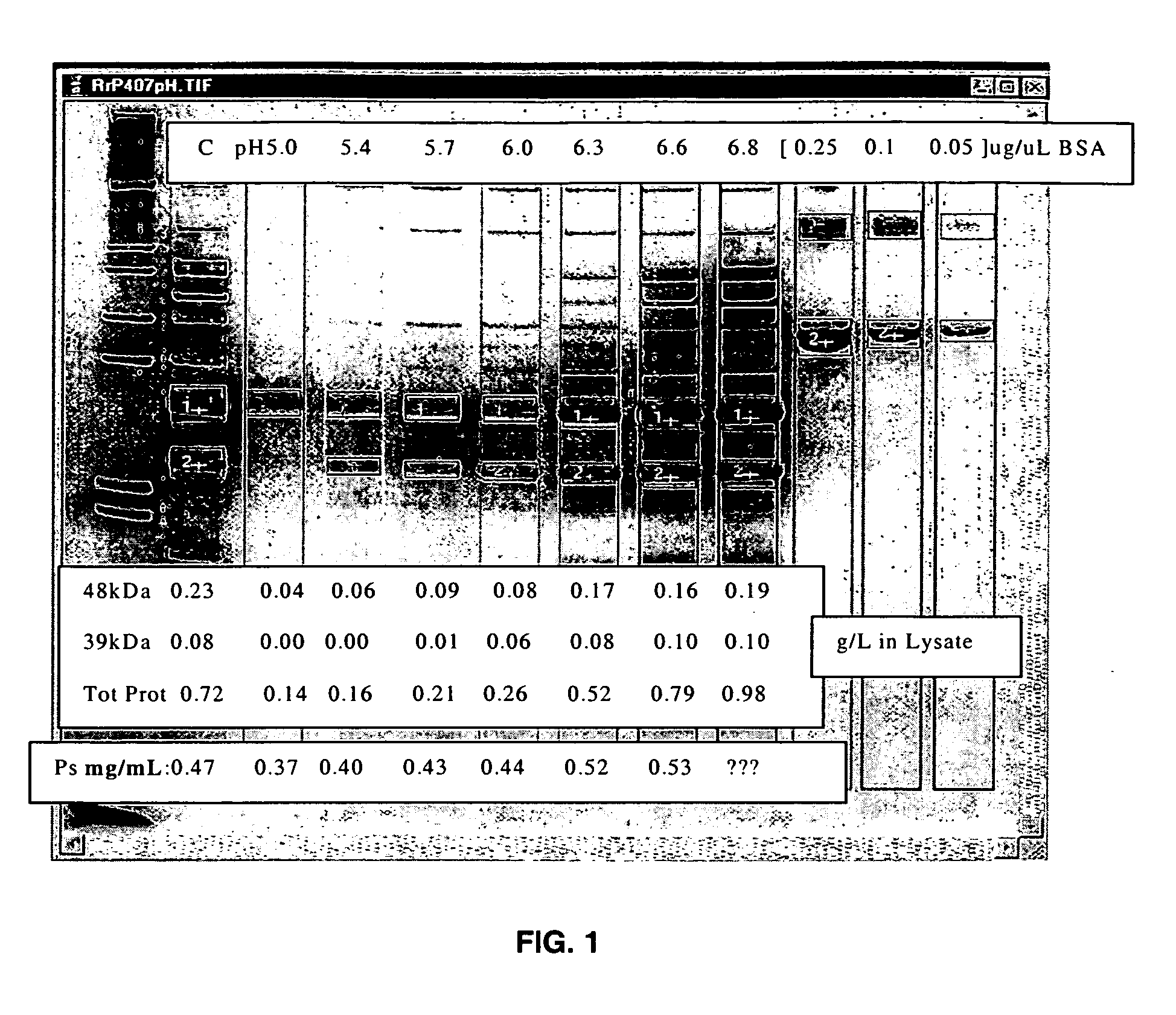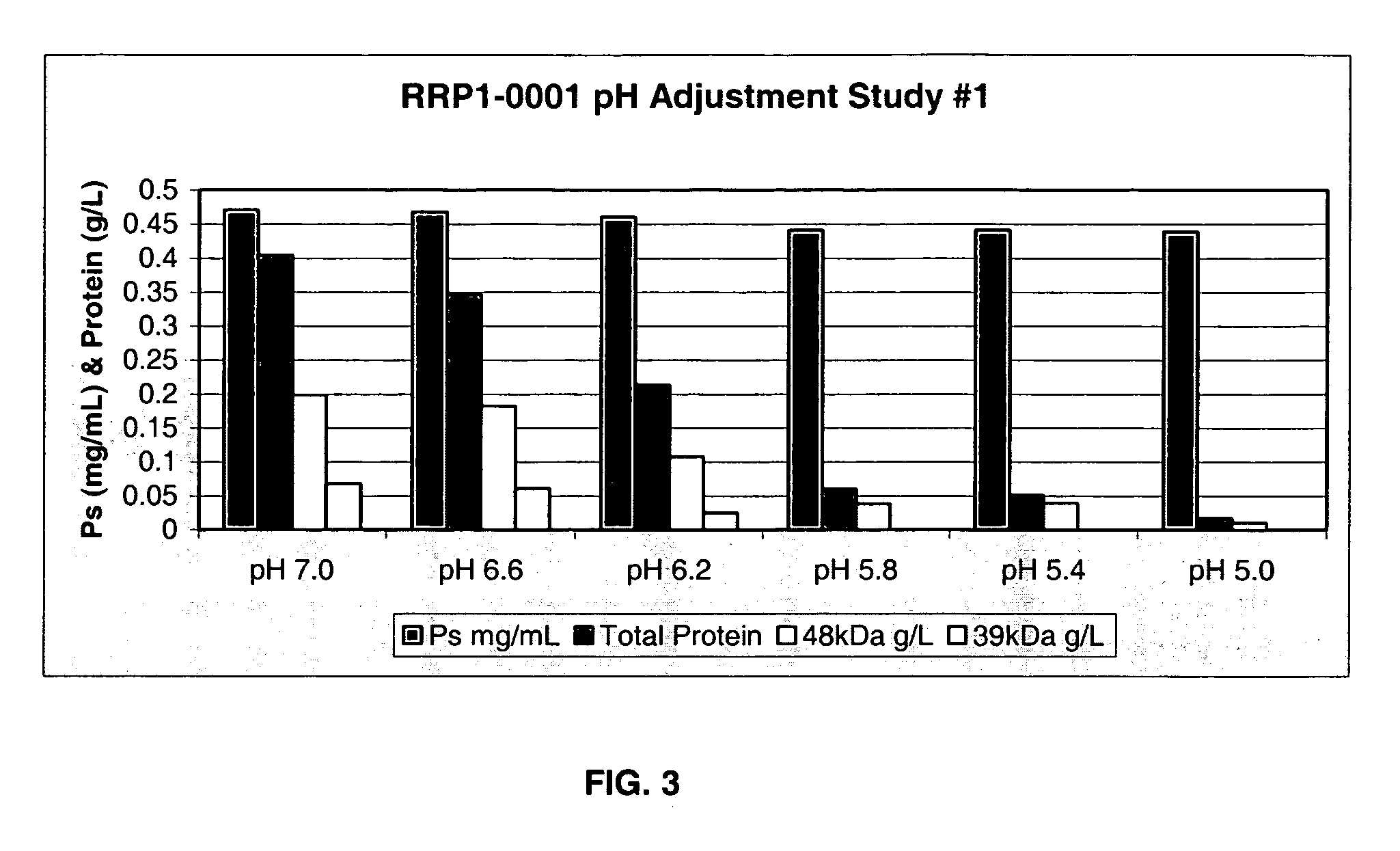Separation of contaminants from Streptococcus pneumoniae polysaccharide by pH manipulation
a technology of streptococcus pneumoniae and contaminants, applied in the direction of antibody medical ingredients, sugar derivates, microorganism lysis, etc., can solve the problems of difficult to remove residual protein that is still present, the residual protein content of purified polysaccharide to exceed specification, and the processing of cell lysate with only moderate success, etc., to achieve the effect of high polysaccharide recovery and total polysaccharide yield
- Summary
- Abstract
- Description
- Claims
- Application Information
AI Technical Summary
Benefits of technology
Problems solved by technology
Method used
Image
Examples
example 1
Protein Reduction in the Cellular Lysate of S. pneumoniae Serotypes 1, 6A and 7F
Preparation of Master and Working Cell Banks
[0054]S. pneumoniae serotype 1 was obtained from the American Type Culture Collection, ATCC, strain 6301. S. pneumoniae serotypes 6A and 7F were obtained from Dr. Gerald Shiffman of the State University of New York. Several generations of seed stocks were created in order to expand the strain and remove components of animal origin (generations F1, F2, and F3). Two additional generations of seed stocks were produced. The first additional generation was made from an F3 vial, and the subsequent generation was made from a vial of the first additional generation. Seed vials were stored frozen (<−70° C.) with synthetic glycerol as a cryopreservative. In addition to frozen vials, lyophilized vials were prepared for the F4 generation. For cell bank preparation, all cultures were grown in a soy-based medium. Prior to freezing, cells were concentrated by centrifugation...
example 2
Protein Reduction in the Cellular Lysate of S. pneumoniae Serotype 5
[0057]S. pneumoniae serotype 5 was obtained from Dr. Gerald Schiffman of the State University of New York, Brooklyn, N.Y. For preparation of the cell bank system, see Example 1.
Fermentation and Recovery
[0058] Cultures from the working cell bank were used to inoculate seed bottles containing the soy-based medium described above (Table 2), which medium was supplemented with a sterile NaHCO3 solution at a 10 mM concentration. The bottles were incubated at 36° C.±2° C. without agitation until growth requirements were met. A seed bottle was used to inoculate a seed fermentor containing the soy-based medium with a 10 mM NaHCO3 concentration in the medium. A pH of about 7.0 was maintained with 3N NaOH. After the target optical density was reached, the seed fermentor was used to inoculate the production fermentor containing the soy-based medium with a 10 mM NaHCO3 concentration in the medium. The pH was maintained with 3...
PUM
| Property | Measurement | Unit |
|---|---|---|
| pH | aaaaa | aaaaa |
| pH | aaaaa | aaaaa |
| pH | aaaaa | aaaaa |
Abstract
Description
Claims
Application Information
 Login to View More
Login to View More - R&D
- Intellectual Property
- Life Sciences
- Materials
- Tech Scout
- Unparalleled Data Quality
- Higher Quality Content
- 60% Fewer Hallucinations
Browse by: Latest US Patents, China's latest patents, Technical Efficacy Thesaurus, Application Domain, Technology Topic, Popular Technical Reports.
© 2025 PatSnap. All rights reserved.Legal|Privacy policy|Modern Slavery Act Transparency Statement|Sitemap|About US| Contact US: help@patsnap.com



